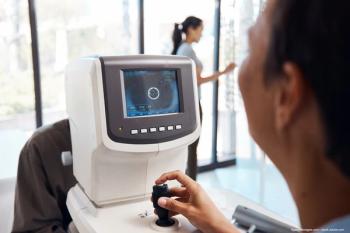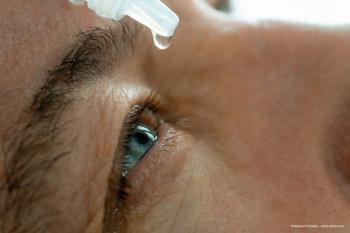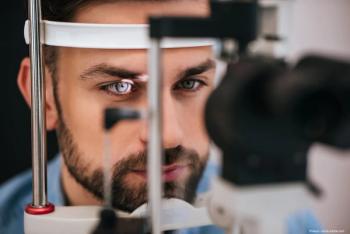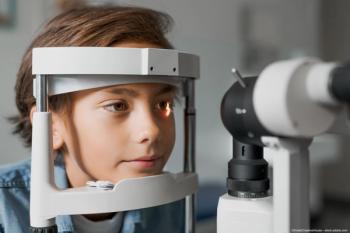
Taking place from 16–20 September 2022, and following the success of last year’s congress, the 40th ESCRS will again be a face-to-face event but supported by a virtual conferencing platform that will allow the sessions to also be streamed.

Taking place from 16–20 September 2022, and following the success of last year’s congress, the 40th ESCRS will again be a face-to-face event but supported by a virtual conferencing platform that will allow the sessions to also be streamed.

Data highlights need for educational materials and training resources in DMO and DR.

12-week interim results of BEHOLD, a proof-of-concept Phase 2a study investigating the candidate UBX1325, provides a positive outlook for a novel senolytic approach for previously-treated patients with diabetic macular oedema.

Symptoms of acute optic neuritis resulting from the disease can resolve in treated rapidly.

Eyecare specialists benefit from being able to monitor their patients long term for optimised and personalised treatment regimens, as well as having access to a more efficient workflow and one which enables them to see more patients.

According to Dr Gregor S. Reiter, the results from the multicentre Phase 3 clinical trial demonstrated that fluid volumes in patients with nAMD can be precisely identified, localised and measured in real-time using artificial intelligence.

Automated quantitative fluid analyses are enabling personalised treatments, better patient outcomes.

Recent identification of the BCO2 gene and the Aster-B transport protein gives insight into carotenoid distribution in the retina.


A synopsis of the findings presented at EURETINA 2022 for ophthalmologists and retina specialists.

The white noise and classical music listened to by the preterm infants during ROP examinations showed positive effects on pain and heart rate and oxygen saturation values.

At the 1-month evaluation, the full-field stimulus threshold had median decrease of -33.2 decibels (dB) (-33.7; -19.8) dB, which remained stable until the last assessment. Visual fields and visual acuity did not change significantly.

Investigators advised that clinicians should be aware of this spectrum of retinal involvement after COVID-19 infections and emphasized the importance of a fundus evaluation.

The investigators explained that elevated angle-closure-related intraocular pressure may aggregate the visual impairment in patients with retinitis pigmentosa.

European investigators describe how they address complications associated with silicone oil endotamponade in vitreoretinal surgery.

The Phase 2 Altitude study is an open-label, randomized, controlled, dose-escalation evaluation of RGX-314, evaluating the efficacy, safety, and tolerability of suprachoroidal delivery of RGX-314 in patients with moderately severe/severe non-proliferative diabetic retinopathy or mild proliferative diabetic retinopathy.

Patients with retinitis pigmentosa experience greater levels of stress and anxiety than individuals in the general population and that the level of stress can be measured easily and non-invasively in hair.


The investigators retrospectively analysed treatment-naive eyes with DMO which received intravitreal treatment with either ranibizumab 0.5 mg or aflibercept 2 mg. All data were collected via Fight Retinal Blindness! registry.

A short course of a low-dose corticosteroid eye drop can relieve inflammation with only a low increase in intraocular pressure.

The stated core foundation of the Women in Retina program is that “the best innovations happen when diverse people with different perspectives collaborate.” The program will help ESRS harness these perspectives and challenge the way things are done and allow for them to be done better.

Physicians may need to recognize issues and treat patients more holistically.

Although the standard of care remains the pharmaceutical option, surgeons would like to see other options for individualised treatment, including artificial intelligence and sustained-release technologies.

The contest will take place at EURETINA 2022 as part of World Retina Day on Saturday 3 September 2022 from 8.30am to 9.30am CEST in Hall X2/Channel 7.

One systematic review and meta-analysis finds bariatric surgery associated with fewer cases of diabetic retinopathy overall and of sight-threatening progression.

This year’s hybrid meeting will allow attendees to participate in person or virtually. Either way, this congress will offer a wealth of information to specialists covering all aspects of retinal diseases.

A team of investigators has found that myopic refractive error is linked with an increased risk of primary open-angle glaucoma, and they indicate that the connection has a genetic foundation.

Foundation Fighting Blindness is a driving force in advancing retinal gene therapies into clinical trials.

Moving past the eyes and into the brain: It is vital to think beyond the eye in the presence of visual impairment and blindness.

Zonular crises occur due to many different aetiologies, but ophthalmologists now have multiple tools available to solve complex problems and achieve excellent results in complex cases.